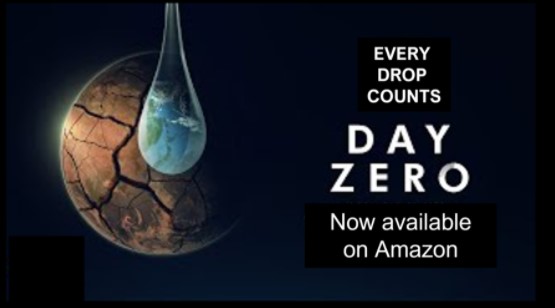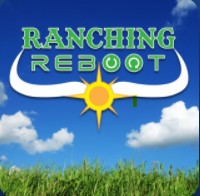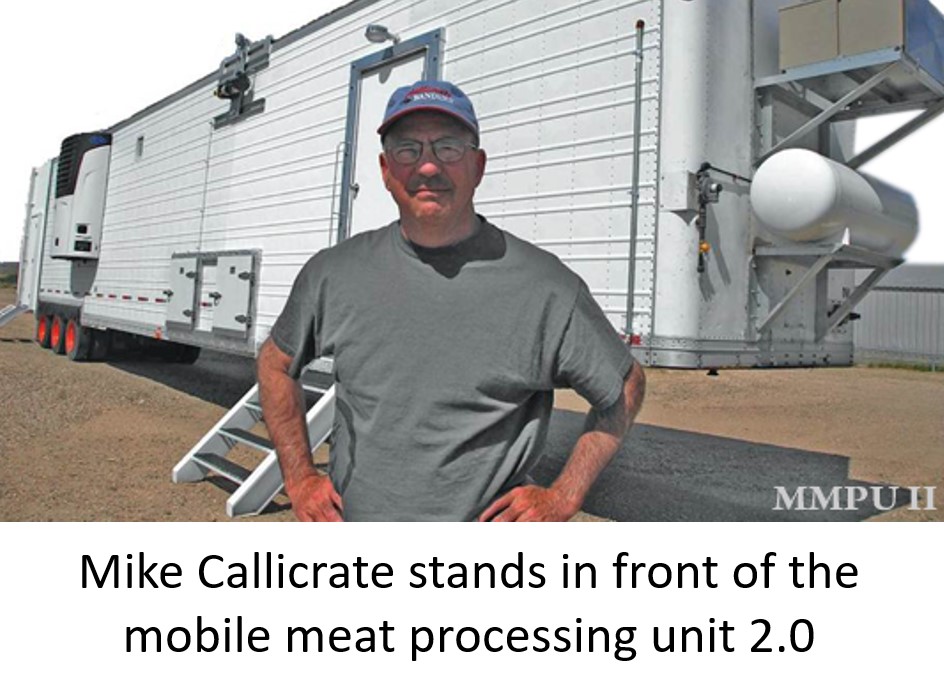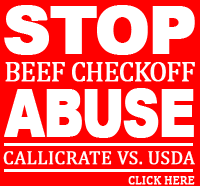Stay Informed!
Subscribe to information and news updates related to farming, food and health issues, click here!-
 “The money and political power of Wall Street has stolen America’s food system, bankrupted our farmers and ranchers, mined our soils, polluted our environment, wasted our precious water, and left us with expensive industrially produced food that makes us sick.” – Occupy Wall Street Food Day, December 2011
“The money and political power of Wall Street has stolen America’s food system, bankrupted our farmers and ranchers, mined our soils, polluted our environment, wasted our precious water, and left us with expensive industrially produced food that makes us sick.” – Occupy Wall Street Food Day, December 2011 -
Above: Ranching Reboot – Episode 4 – Mike Callicrate, owner of Ranch Foods Direct, sat down with us to talk about all manner of things from cattle markets, to public food spaces, the Bander, his feedlot and the pathway he built to market.
He shares valuable lessons learned from fighting against the commodity production system and how he’s built his own pathway to the consumer.
We talk about small community slaughter plants and public meat spaces and what that could look like going in to the future. We discuss environmental challenges, the food police and what it means when a Dollar General comes to town.




- This Cattleman's Got A Beef
 Photo: Sean Cayton - 2003People producing good food from happy animals, while improving the environment, shouldn’t have to fear the government.
Photo: Sean Cayton - 2003People producing good food from happy animals, while improving the environment, shouldn’t have to fear the government.
Photo above featured in a 2003 article: This cattleman's got a beef, Mike Callicrate and Ranch Foods Direct take on the big meat packersby Kathryn Eastburn Categories
Food Policy & Law
E. Coli Confessions Part I
by John Munsell | Oct 11, 2011
Opinion
Editor's Note: This is the first part in a series written by John Munsell of Miles City, MT, who explains how the small meat plant his family owned for 59 years ran afoul of USDA's meat inspection program. The events he writes about began a decade ago, but remain relevant today.
They say that confession is good for the soul. I've been involved in a series of ugly events since my plant in 2002 recalled 270 pounds of ground beef contaminated with E.coli O157:H7 and now want to admit the embarrassing truth for public review. moreTags
- advanced meat recovery
- antibiotics
- beef checkoff
- Big Food
- BPI
- Callicrate
- Callicrate Beef
- Callicrate Cattle Co.
- Cargill
- Chipotle
- Colorado Springs
- COOL
- Dudley Butler
- e. coli
- Eric Schlosser
- fast food nation
- food Inc.
- Foodopoly
- GIPSA
- HSUS
- IBP
- Industrial Agriculture
- JBS
- McDonald's
- meat packers
- Mike Callicrate
- Monsanto
- NCBA
- OCM
- Organization for Competitive Markets
- pink slime
- R-CALF
- Ranch Foods Direct
- Rick Hughes
- Smithfield
- Sodexo
- steroids
- Sysco
- Tom Vilsack
- Tyson
- U.S. Farmers and Ranchers Alliance
- USDA
- Vandana Shiva
- Walmart
- zilmax
National News Supplement
Let’s Say Goodbye to Smithfield and the Big Food Cartel
The true efficiency of the current industrialized food system …
The news about the Vernon, California Smithfield pork plant closing should be met with celebration, not panic. The departure of the Chinese owned pork giant from the state, along with their abusive, extractive, and fragile supply chains, should make way for new more efficient and sustainable local/regional meat plants, but only if the new plants can be assured fair market access.
Building safe and profitable farm to consumer connections – A farm & ranch, small business partnership …

Grant and loan programs should invest in more direct producer to consumer community-based infrastructure outside of and separate from the failed Big Food system.
Any new infrastructure that doesn’t connect directly with independent retailers, restaurants, and the consumer more directly will be a waste of time and money in the current predatory and concentrated marketplace.
Consider building new community based models that connect local/regional producers to consumers via independent food related business like we’re building in here in Colorado Springs.
Day Zero: Salt, Water, and Soil – When it’s gone, they leave
A handful of powerful companies are getting rich mining the Earth’s precious resources at the expense of planet and people everywhere. Why are we allowing it?

Cargill shutters Avery Island salt mine after fatal roof collapse
Recent news out of Louisiana announcing the closure of the Avery Island salt mine, reminds us of the dangers in dealing with big corporations like Cargill.
In January 2013, Cargill announced the Plainview, Texas slaughter facility that employed 2,000 workers would be closed. Cargill claimed it was due to tight cattle supplies. This came after decades of below cost-of-production prices paid to livestock producers, resulting in a shrunken U.S. cow herd, compliments of Cargill, the other members of the meatpacker cartel, USDA, and meatpacker friendly courts. The Plainview plant remains closed and gutted of the infrastructure and machinery to process cattle. Economic development experts now feel the region would have been better served with many small locally owned businesses.
A bigger reason to close the Plainview plant.
Cargill is the largest privately held corporation in America in terms of revenue. Known for well-informed long-term planning, Cargill leadership knew water from the Ogallala Aquifer was being pumped out in excess of the recharge rate. Like salt, the precious life sustaining water is literally being mined, and in places like Muleshoe, Texas, it’s already gone. Nearly everything Cargill owns depends on abundant and free water.

DAY ZERO is a documentary about the impending global water crisis and how that is one of the most serious and pressing issues of our lifetime.
The Ogallala Aquifer is in steep decline. Since the 1950s, the precious water has been systematically extracted and converted to corporate cash through crops and livestock.
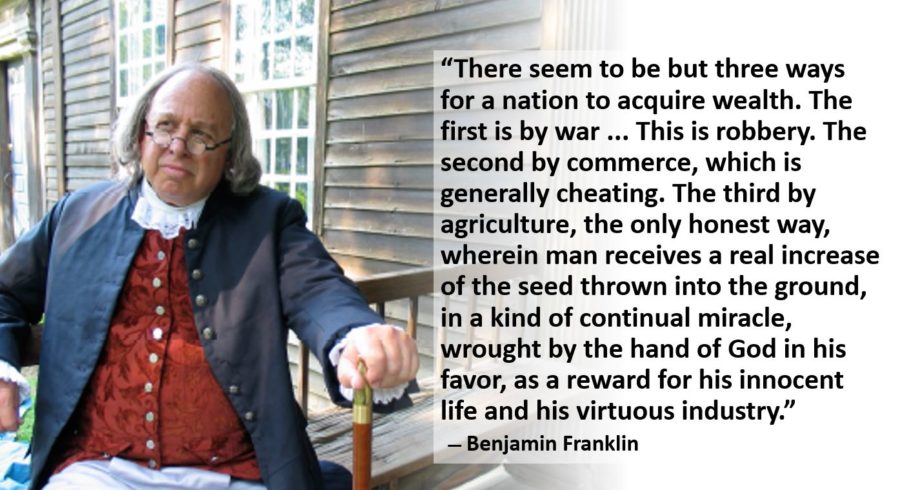
Cargill is the modern-day version of the East India company – the much feared commerce-controlling corporation of Franklin’s day.
For decades, Cargill, known as The Worst Company In the World, has surrounded farmers and ranchers from input to output, stealing the fruits of their labor, buying crops and livestock at below-cost-of-production harvest prices to sell later in the year at higher prices, often much higher. This year, Cargill is raking in nearly double the harvest price, while people around the globe go hungry.
Honestly, why should Cargill care about Avery Island, Plainview or Muleshoe Texas, or even the Ogallala Aquifer? Like a strip-mining shovel looking for coal, Cargill searches the world for resources to convert to shareholder cash and equity, draining countries and communities of their critical life sustaining resources, including as majority owner of the largest grain terminal in resource-rich Ukraine.
So, why do we continue to allow a handful of global corporations of exploit planet and people? Perhaps the U.S. Senator from Cargill’s home state, Amy Klobuchar, could help answer the question? Although the Senator didn’t mention Cargill in her recent book, Antitrust: Taking on Monopoly Power from the Gilded Age to the Digital Age, wouldn’t Minnesota’s biggest multinational corporation be a top choice for breakup?
What do you say Senator Klobuchar?
ConAgra Sells Cattle to IBP
As we continue to discuss ways to restore competition, let us not forget who we are dealing with. ConAgra, an abusive multinational conglomerate, later sold to Brazilian owned criminal conglomerate, JBS. IBP, the biggest beef packer in the world, sold to chicken giant, Tyson.
The food cartels left controlling our food system, from baby formula to school lunch, are serial offenders and must be broken up before any new local/regional food infrastructure can have a chance of succeeding . No compromises.
Big packers are gangsters, thugs, and thieves
Link to the JBS Violation Tracker
Listen to Ranching Reboot episode #66 – Building a Food Village
Corporate Roundup
February 1998
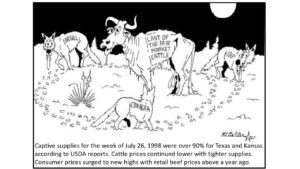
In a move that made cattle feeders livid and has drawn attention from government regulators, ConAgra sold cattle to IBP for slaughter in late January. ConAgra (and IBP) pushed cattle prices down with the deal, and left cattle feeders wondering if a competitive market — or laws against market manipulation — were still in force.
Here’s how market analyst Les Messinger described it: “We saw last week begin with packers bidding $63.00 while producers asked $66.00. As usual, record supplies of formula and contract cattle played a major role in allowing the packer to sit out the open market for the first three days of last week. Last Wednesday morning did succeed in bringing an additional new wrinkle into the market. After almost no open trade, it became rumored that IBP managed to get several thousand cattle bought at the lower price [i.e. $63.00]. Later that day it was disclosed that the party that sold those cattle to IBP was Monfort.” Monfort is ConAgra’s cattle-feeding and meatpacking subsidiary.
“Now let us see,” continued Messinger. “After being unable to buy cattle at the lower price, we see the world’s second largest packer selling cattle to the world’s largest packer. Hmmm! This was followed the next day by Monfort announcing that due to a lack of profitability they were shutting down three of their four plants on Friday, Saturday, and Monday.”
Other market-watchers reported that Monfort replaced many of the cattle it sold to IBP, for less than it got for the cattle it sold. That means Monfort made money trading cattle, by buying cattle after it drove down the market price by selling to IBP. And it drove down its costs for buying cattle to keep its slaughter plants full, too.
Concerns about packers’ use of this kind of practice to manipulate the price of cattle has prompted cattle producers to demand stricter enforcement of the Packers and Stockyards Act, the antitrust law which governs the meatpacking industry. Officials in the Grain Inspection, Packers and Stockyards Administration (GIPSA), part of the United States Department of Agriculture, are investigating.
Monfort did shut down three of its four packing plants for three days in late January and early February. Neither ConAgra or Monfort explained the shutdown, but livestock market analysts have been claiming that packers are losing money at current cattle and beef prices.
For its most recently completed quarter, ConAgra reported net earnings of $210.6 million on $6.4 billion in revenues—a 12% increase in earnings on sales that were 3% lower compared to its year-ago figures. The company reported 6% lower profits in its meat and poultry segment for the quarter compared to a year ago.
‘Harvested cattle, slaughtered markets’
Farm and Food File for the week beginning Sunday, May 15, 2022
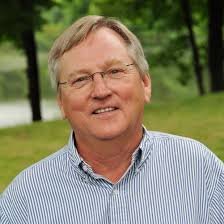
Alan Guebert
You don’t need to be a vegan to know that livestock and poultry aren’t “harvested,” the squeaky clean verb that’s become fashionable among farm and ranch groups to minimize the end–as in The End–of most animals their members grow.
Soybeans are harvested; pigs are slaughtered. Wheat is harvested; cattle are slaughtered.
It’s not a minor point, insists C. Robert Taylor, Eminent Scholar of Agricultural Economics and Public Policy at Auburn University, in his recently released treatise on today’s badly broken cattle markets. Taylor telegraphs the paper’s theme through its title, “Harvested Cattle, Slaughtered Markets?”
The semantic sarcasm isn’t accidental: While U.S. farm and commodity groups spent decades polishing meat’s image (“harvesting”), global agbiz spent their time and resources buying up, then dominating–ahem, slaughtering–farm and food sectors like seed, cattle, poultry, and grocery retailing.
Now, one market, cattle, is so near death that both the Senate and House Ag committees recently held widely publicized hearings to push ideas on how to resuscitate it. Two plans were showcased. The first “would create a new U.S. Department of Agriculture (USDA) office to monitor for anti-competitive practices in the meat and poultry industries,” reported the Washington Post April 27.
The second, labeled “The Cattle Price Discovery and Transparency Act,” hopes to establish “minimums for negotiated sales and require clear reporting of marketing contracts to ensure ranchers are getting a fair shake in a highly consolidated cattle market,” it continued.
Either or both ideas may have had merit 20 years ago when it was already evident that major meatpackers were tightening their grip on cattle markets. Today, however, both plans are window dressing from late-to-the-party politicians. Neither will have a nickel’s worth of impact on prices paid by packers for cattle or for altering any “anti-competitive practices in the meat and poultry industries,” says Taylor.
Why? Because, as his readable, 49-page report makes clear, major packers long ago learned how to minimize competition in the live cattle market while maximizing confusion over today’s USDA maze of reporting requirements. The data bears witness to their ever-growing prowess at the expense of both cattle growers and consumers.
Over the last two decades, Taylor writes, “Retail beef prices in constant [deflated] dollars have trended strongly upward… from about $500/cwt [per one hundred pounds] to over $700/cwt… Grocery store profitability has also trended upward, about doubling in the last three decades…”
“Profitability of independent cattle feeding has trended downward… from an average profit of $50/head to an average loss of $50/head.”
Moreover, these “Sustained financial losses for independent feeders likely explain, in part or in whole, the loss of 83,000 feedlots with a thousand or fewer head capacity in 25 years and 48,000 in the last decade” alone.
These feedlots’ get-out-while-you-can math was pretty simple, offers Taylor. The $50-per-head loss they faced in just the past decade alone would have totaled a devastating $1.5 million-per-feeder had they stayed.
Somehow, though, the uber-big feeders escaped similar losses and a similar fate: The number of feedlots with over 50,000 head capacity actually increased from 45 in the late 1990s to 77 today. How?
“Sweetheart deals with large captive feeders”–independent feedlots contractually-tied to one of the big four packers–“may explain, in part or in whole, how they have survived and even (grew) in the last decade… Publicly available data on costs or returns for giant feedlots are not available to address this question.”
If neither Congressional effort holds little to no hope to even partially repair today’s broken cattle market, what might? Taylor offers four “options for further discussion.” All hold some merit, he explains in a May 9 telephone interview, but also, all require a level of government intervention that hasn’t been seen in most ag markets for decades.
“The bottom line,” Taylor admits, “is that after decades of watching cattle markets become more integrated with meatpackers and meat retailers, I don’t have a good solution that’s politically workable.”
Bottom line? If the experts say it’s slaughter, it’s slaughter.
© 2022 ag comm

